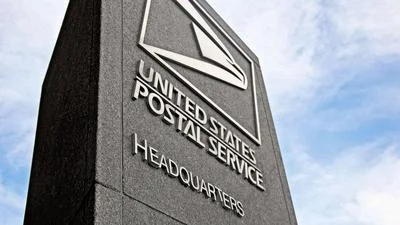Dear Comptroller General Dodaro:
The U.S. economy depends on the secure and expeditious flow of millions of tons of cargo each day. Cargo shipments can, however, present significant security concerns, as individuals have exploited vulnerabilities in the supply chain by using maritime cargo shipments to smuggle narcotics, stowaways, and other contraband into the United States. U.S. Customs and Border Protection (CBP), a component within the Department of Homeland Security (DHS), has responsibility for administering maritime cargo security and reducing the vulnerabilities associated with the shipping cargo to the U.S. through the global supply chain while maintaining robust trade and commerce.
In general, cargo entering the U.S. via the maritime domain is subject to physical examination by CBP pursuant to a number of authorities, including Security and Accountability For Every Port Act of 2006 (SAFE Port Act). The SAFE Port Act, as amended by the Implementing Recommendations of the 9/11 Commission Act of 2007, also includes cargo screening and scanning requirements. However, given that DHS has extended the date by which 100 percent scanning is to be implemented several times, the extent to which the 100 percent scanning requirement is being enforced is not clear. In addition, it is not clear how CBP is defining “containerized cargo" for purposes of the 100 percent scanning requirement and the extent to which the enforcement is consistent across all domestic ports.
We have received reports that CBP is not applying a consistent standard at ports of entry across the United States for screening requirements for non-containerized cargo, including for ports in Michigan. CBP’s inconsistent approach gives a strategic advantage to some ports while placing burdensome infrastructure requirements on other ports, such as demands from CBP to purchase expensive scanning equipment that is provided by the federal government at other points of entry.
Because of inconsistencies that exist regarding cargo security standards for non-containerized cargo-such as break bulk cargo-we would like to request that GAO conduct a review focused on answering the following questions:
* Does DHS/CBP have any maritime cargo security programs or requirements that pertain to non-containerized maritime cargo and, if so, to what extent are CBP’s non-containerized cargo security requirements and procedures implemented consistently across ports? Please provide any updates on the status of changes to policy for break bulk cargo.
* What types of cargo shipments (i.e., containerized cargo, break bulk, etc.) does CBP consider to be within the scope of its maritime cargo security programs, such as the Container Security Initiative and the 100 percent scanning mandate?
* What type of risk analyses, if any, has DHS or CBP conducted to determine the risks of non-containerized maritime cargo before its departure from a foreign port?
* What do DHS and CBP officials view as impediments, if any, to ensuring the security of non-containerized maritime cargo?
Thank you for your consideration of this request.
Source: U.S. Senate Committee on Homeland Security and Governmental Affairs








